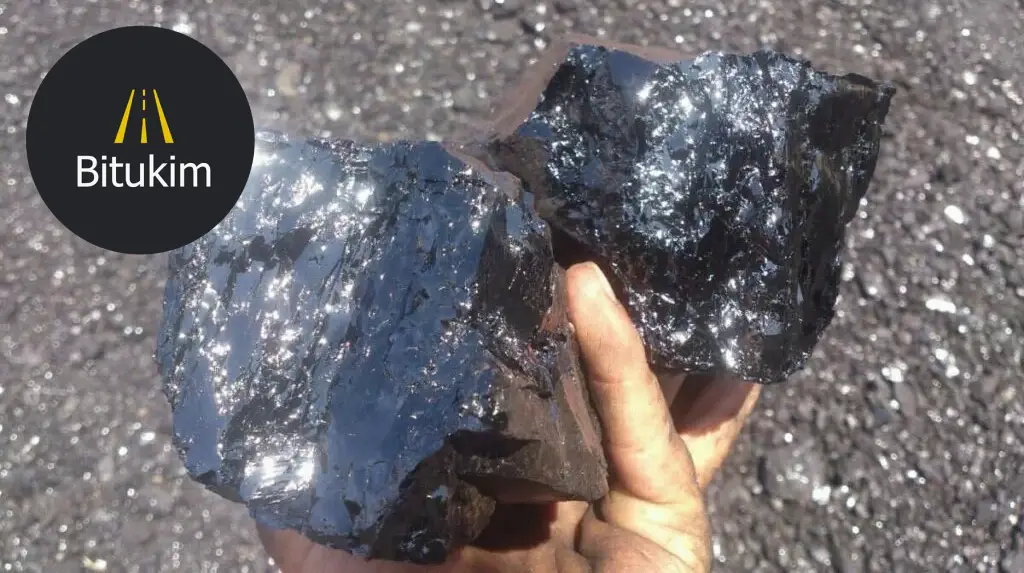benefits of Gilsonite in coatings, Gilsonite is a versatile material used in paints and coatings due to its unique properties. Here’s a detailed look at how Gilsonite is used in this industry, along with its benefits and applications:

How Gilsonite is Used in Paints and Coatings
1. Pigment Binder
- Role: Gilsonite acts as a binder for pigments in paints and coatings. It helps to keep pigments evenly distributed and prevents them from settling or separating.
- Function: The binder properties of Gilsonite ensure that pigments adhere well to surfaces and contribute to the overall consistency and quality of the paint.
2. Film Formation
- Role: Gilsonite contributes to the formation of a durable and flexible film on the coated surface.
- Function: The film formed with Gilsonite enhances the coating’s protective properties, including resistance to wear and environmental factors.
3. Thickening Agent
- Role: In some formulations, Gilsonite is used to increase the viscosity of the paint or coating.
- Function: By thickening the mixture, Gilsonite can help achieve the desired consistency and application properties, making the product easier to handle and apply.
Benefits of Using Gilsonite in Paints and Coatings
1. Enhanced Durability
- Weather Resistance: Gilsonite improves the resistance of paints and coatings to weathering, UV light, and moisture. This results in longer-lasting finishes that are less prone to cracking, peeling, or fading.
- Chemical Resistance: The inclusion of Gilsonite can enhance the chemical resistance of coatings, making them suitable for harsh environments.
2. Improved Adhesion
- Surface Bonding: Gilsonite enhances the adhesion of paints and coatings to various surfaces, including metal, wood, and concrete. This ensures a strong bond and reduces the risk of delamination.
- Uniform Application: The improved adhesion properties lead to a more uniform application and better overall performance of the coating.
3. Enhanced Aesthetic Properties
- Gloss and Finish: Gilsonite can contribute to a higher gloss and better finish of paints and coatings, improving their visual appeal.
- Color Retention: It helps in maintaining the vibrancy and consistency of colors over time.
4. Increased Flexibility
- Application Flexibility: The addition of Gilsonite can improve the flexibility of the coating, allowing it to expand and contract with the underlying substrate without cracking.
- Temperature Resistance: It provides better performance under varying temperature conditions, making the coatings suitable for a wider range of environments.
5. Cost-Effectiveness
- Reduced Maintenance: The durability and resistance properties of Gilsonite-enhanced coatings can lead to lower maintenance costs over time.
- Extended Lifespan: By extending the lifespan of the coating, Gilsonite can offer long-term cost savings despite the potentially higher initial cost of the raw material.
Applications of Gilsonite in Paints and Coatings
1. Protective Coatings
- Industrial Coatings: Used in coatings designed for industrial equipment and infrastructure, providing resistance to corrosion, abrasion, and chemical exposure.
- Marine Coatings: Ideal for marine environments due to its resistance to moisture and salt.
2. Architectural Paints
- Exterior Paints: Applied in paints for exterior surfaces, offering enhanced protection against weathering and environmental damage.
- Interior Finishes: Used in high-quality interior paints to improve durability and maintain appearance.
3. Automotive Coatings
- Protective Finishes: Gilsonite is used in automotive paints to enhance durability and resistance to environmental factors.
- High-Gloss Coatings: Provides a high-gloss finish that improves the appearance of automotive surfaces.
4. Specialty Coatings
- Anti-Corrosion Coatings: Employed in coatings designed to protect metal surfaces from rust and corrosion.
- Fire-Resistant Coatings: Used in formulations for fire-resistant coatings, providing added protection in high-risk environments.

